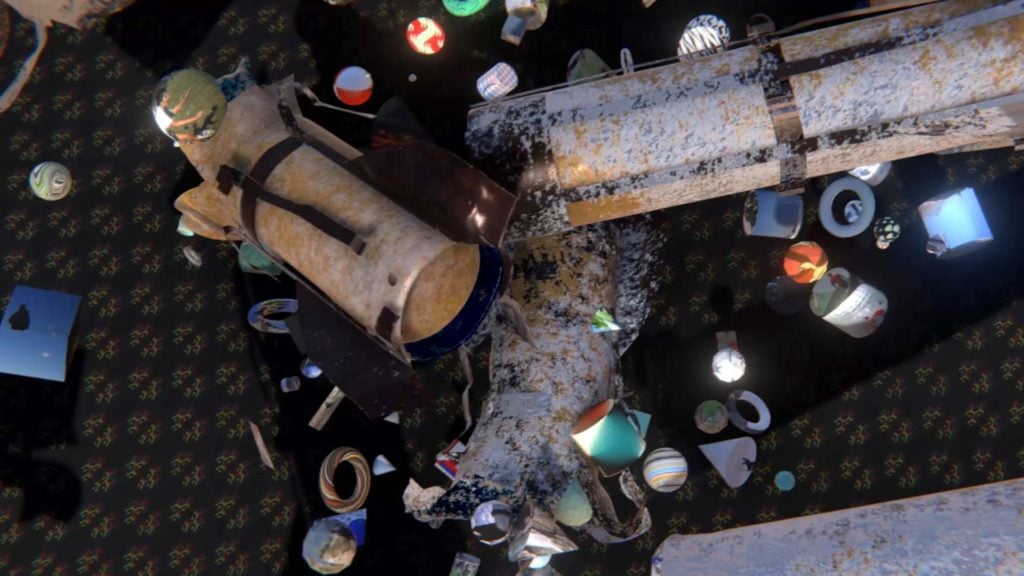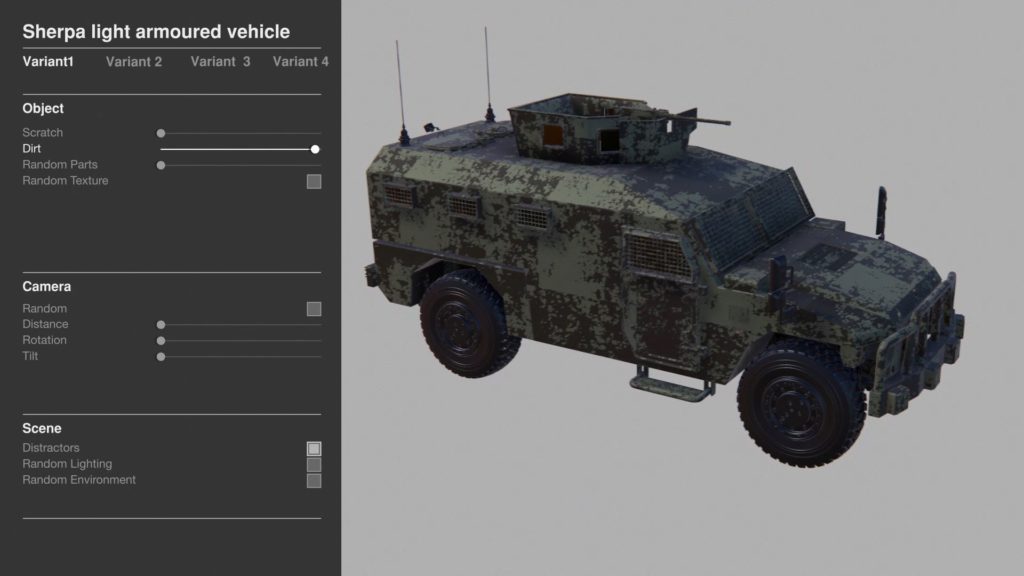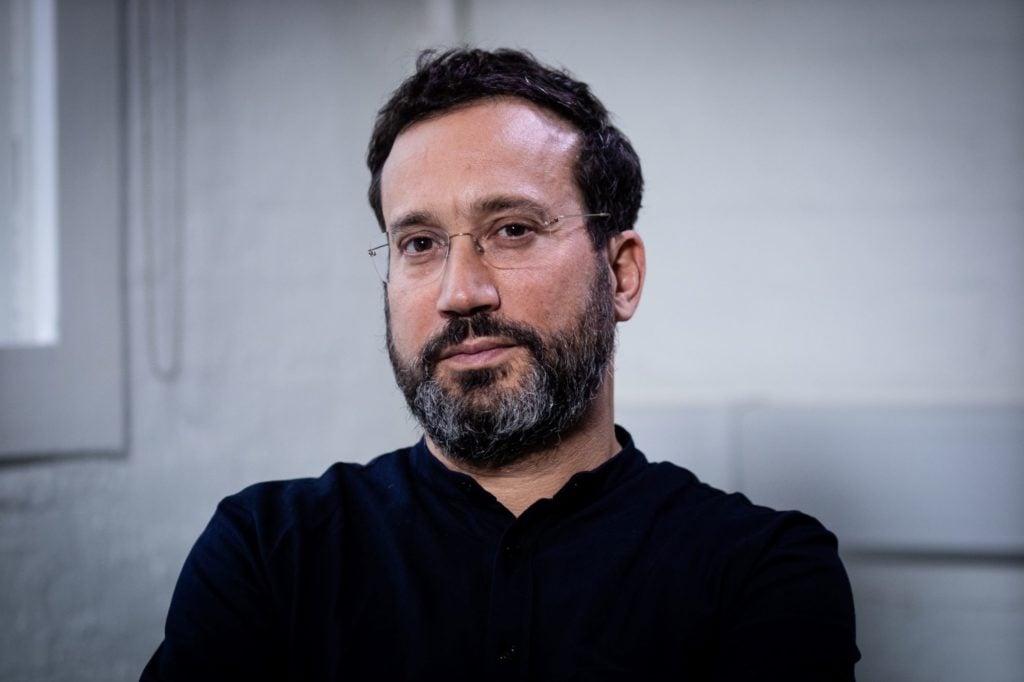The director of Forensic Architecture, Eyal Weizman, has been denied entry to the US after being classified as a “security threat” by a Homeland Security algorithm. The unconventional artist and academic was due to attend a survey of the multidisciplinary collective’s work in Miami, after which he planned to travel to the opening of “Uncanny Valley: Being Human in the Age of AI,” a group show at the De Young Museum in San Francisco. Weizman fears that what happened to him could have repercussions for other human-rights activists investigating state violence.
Two days before Weizman, a professor at London’s Goldsmiths College, was due to fly to the US from Britain, he received an email from the US Embassy telling him that the visa waiver on his British passport had been revoked. When he went to the embassy in London last week, an official would only tell him that an algorithm had identified a related “security threat.”
“I don’t know how the algorithm operates but from what the officer told me it works from association, so it’s not one thing, it’s the relation between things,” Weizman tells Artnet News. That association could involve any aspect of his work with Forensic Architecture, which painstakingly pieces together evidence from a variety of sources when investigating human-rights violations and miscarriages of justice, often challenging the official versions of fatal events.
“Associative algorithmic policing is a problem particularly for human-rights groups like Bellingcat and ourselves,” Weizman explains. “It will have a chilling effect.”
Forensic Architecture has gained increasing recognition in the art world, especially among politically engaged curators. The hard-to-categorize collective was nominated for the 2018 Turner Prize, and staged an impressive show at the ICA in London. The group also took part in documenta 14. For the 2019 Whitney Biennial they presented a video, in collaboration with Praxis Films, that probed the links between the New York museum’s then-chairman Warren Kanders and his company Safariland’s manufacture and sale of so-called “less-lethal” weapons, such as tear gas.

Forensic Architecture, Model Zoo (2020). Courtesy of Forensic Architecture.
The exhibition that Weizman was attempting to travel to in Miami is staged in the city’s Freedom Tower and organized by the Miami-Dade College’s Museum of Art and Design. It includes Forensic Architecture’s new work based on the abuse of a Palestinian in Hebron by the Israeli Defence Force. “We worked with whistleblower soldiers,” Weizman says. “They have been under incredible pressure from the Israel government.” The pieces takes the form of a virtual-reality environment, an innovation for the group.
If he had made it to the United States, Weizman had also planned to help launch a joint investigation into Homestead, a controversial detention center for migrant children in Southern Florida. The aim was to teach local groups Forensic Architecture’s research methods into alleged abuses.
“Uncanny Valley,” the show at the De Young Museum that features Forensic Architecture, explores contemporary artists’ responses to the application of artificial intelligence or AI. Much of AI technology in use today, of course, was developed in nearby Silicon Valley. “Model Zoo [the piece on view] is a continuation of our work at the Whitney using machine-learning tools to identify, online, grave human-rights violations,” he says. The irony of using algorithms to locate abuse, and then falling victim to one himself, is not lost on Weizman.

Forensic Architecture, Model Zoo (2020), courtesy of Forensic Architecture
Since 2018, Forensic Architecture has used photorealistic digital renderings based around 3D models to train algorithmic classifiers to identify tear-gas canisters and chemical bombs deployed against protesters worldwide, including in Hong Kong, Venezuela, and Sudan, as well as on the US-Mexico border.
In a joint statement, Thomas Campbell, the director of the Fine Arts Museums of San Francisco, and Claudia Schmuckli, the curator-in-charge of its contemporary art wing, said: “We are deeply saddened that Eyal will not be allowed to join us this weekend to celebrate the opening of the exhibition. We stand with him and Forensic Architecture’s partner communities who continue to resist violent state and corporate practices and who are increasingly exposed to the regime of ‘security algorithms.’”
Meanwhile, Forensic Architecture’s many international projects and partnerships will continue. Weizman had been hoping to accompany his partner, Inez Weizman, who is also an academic, as well as their two children, on the planned trip to the US.
“What is concerning is that our two young children were kept for two and a half hours without her [in JFK airport],” he says. His partner, who is the director of the Bauhaus-Institute for History and Theory of Architecture and Planning at the Bauhaus-Universität Weimar, Germany, was eventually allowed entry to the US to give two lectures in the US, and to launch a book. “If they want to ask questions about me, and my passport, that’s fine, but I was concerned as a father and because she felt uncomfortable answering all those questions,” Weizman explains.









